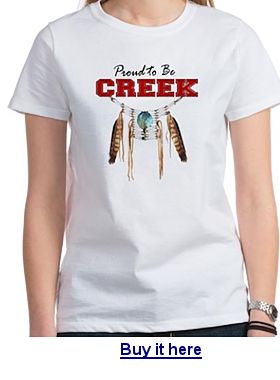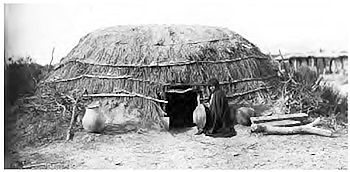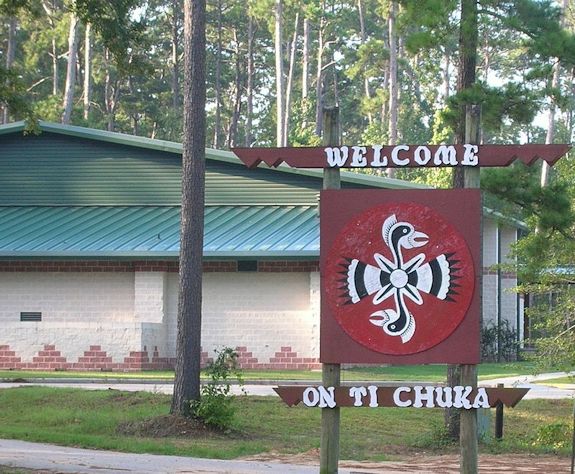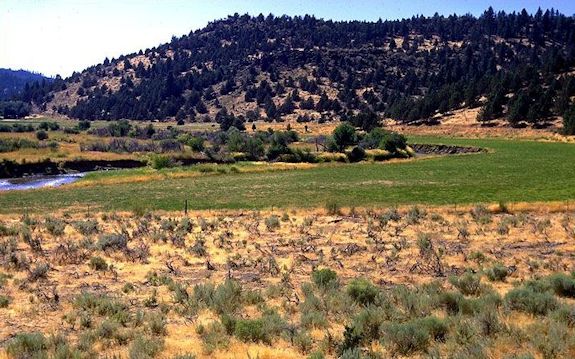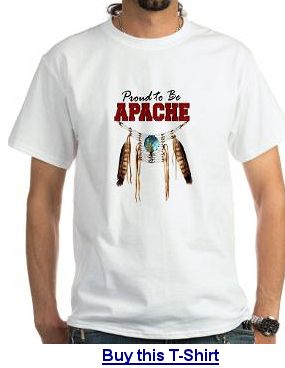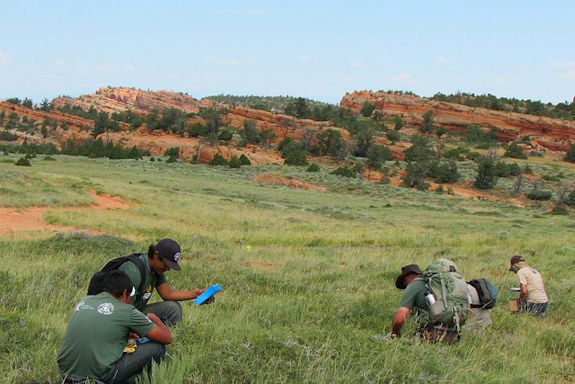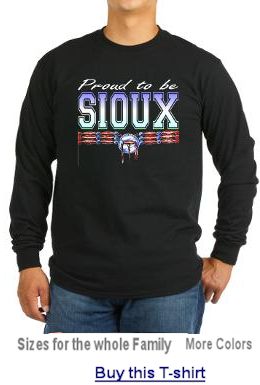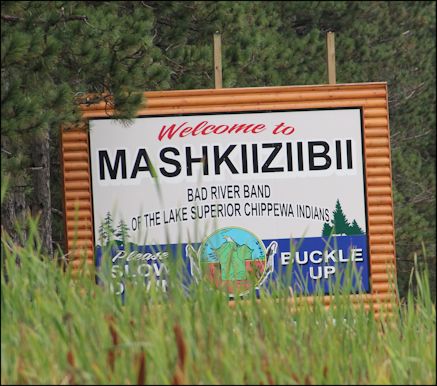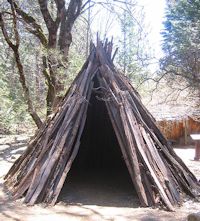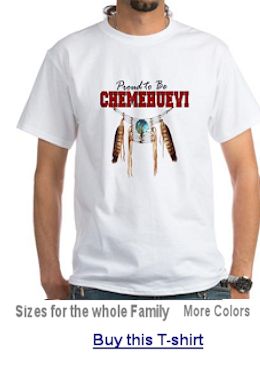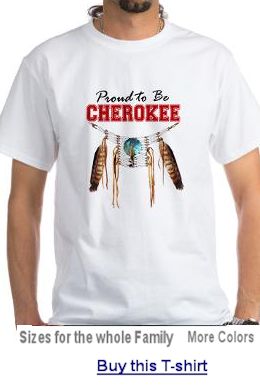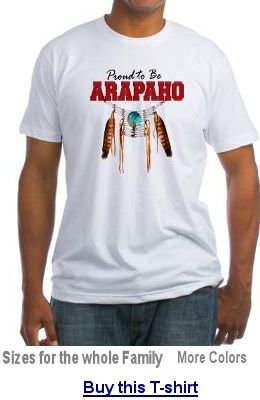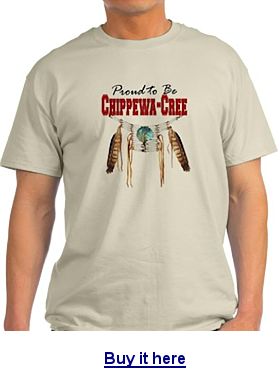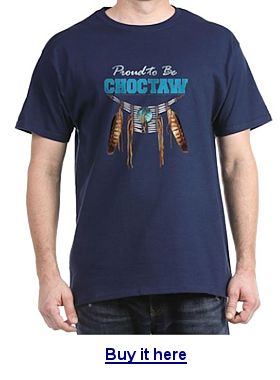US Tribes A to Z (Federally Recognized)
US Tribes A-Z
Indigenous peoples in what is now the contiguous United States are commonly called “American Indians”, or just “Indians” domestically, but are also often referred to as “Native Americans”. In Alaska, indigenous peoples, which include Native Americans, Yupik and Inupiat Eskimos, and Aleuts, are referred to collectively as Alaska Natives.
Native Americans and Alaska Natives make up 2 percent of the U.S. population, with more than 6 million people identifying themselves as such, although only 1.8 million are recognized as registered tribal members. Tribes have established their own rules for membership, some of which are increasingly exclusive. More people have unrecognized Native American ancestry together with other ethnic groups. A minority of U.S. Native Americans live in land units called Indian reservations. Some southwestern U.S. tribes, such as the Yaqui and Apache, have registered tribal communities in Northern Mexico. Similarly, some northern bands of Blackfoot reside in southern Alberta, Canada, in addition to within US borders.
A number of Kumeyaay communities may be found in Baja California del Norte.
Indian tribes are unique legal entities in the United States and are distinct political communities with extensive powers of self-government. Tribal sovereignty predates the U.S. government. Treaties, federal statutes and executive agreements over the past 200 years have established a special trust relationship between tribes and the federal government. The federal Bureau of Indian Affairs (B.I.A.) has been designated by the Secretary of the Interior as the primary agency to protect tribal interests and administer trust responsibilities.
Federal Tribes (F)
Federal tribes followed by (F) have recognition by the US. Government. Recognized Indians are those who are enrolled members of tribes from whom the federal government has acknowledged treaty or statutory obligations. There are 566 federally recognized indian tribes (as of January 14, 2015).
State Tribes (S)
State tribes marked with an (S) have recognition at the state level, but may or may not have federal recognition by the US Government.
Terminated Tribes (T)
During the 1950s, in a move to assimilate Native Americans into mainstream America, the U.S. government ended federal trusteeship of roughly three percent of the country’s Native American population through a process called termination. Of the terminated tribes, 62 were native to Oregon and 41 were in California. Others were in Kansas, Minnesota, Montana, Nebraska, New York, North Dakota, Utah, and Wisconsin. Even though the tone of the termination legislation was emancipation, the net effect of the policy on terminated tribes was cultural, political and economic devastation. In recent years, however, vigorous efforts have been mounted by terminated tribes to reestablish or restore the trust relationship. Terminated tribes are marked with (T).
UnRecognized Tribes (U)
Un-recognized tribes marked with (U) are historical indian tribes or people with Indian ancestry who are not recognized by either the Federal Government or any state government entity. Unrecognized Indians include those from tribes with whom federal relations have been severed by congressional action (termination) and those whose tribe has never been recognized by the federal government. They also include persons of indian ancestry who, for fear of persecution, fled or hid their Indian ancestry during the time the early Indian Rolls were being taken in the mid to late 1800s and early 1900s.
Petitioning Tribes (P)
Many of the Terminated Tribes and Unrecognized tribes are today petitioning to again be recognized as tribal governments with sovereign nation status or to be included in tribes they were previously terminated from. Those petitioning tribes are marked with a (P), where known. Inclusion on this site does NOT mean an endorsement has been made for recognition of any particular tribe. All entities claiming to be US indian tribes that we are aware of have been included for completeness. Where known, we have indicated official tribal status with our Key Chart. In many cases we have not verified the validity of the claim of tribal status, and leave it to your own common sense or further research to validate tribal claims.Alternate names in parenthesis are either older names that were once used to identify that tribe, shortened common names, or they are misspellings.
Most Recent Articles:
Home :: US Tribes A to Z :: US Tribes A-B :: Agua Caliente Band of Cahuilla Indians of the Agua Caliente Indian Reservation
Who are the Agua Caliente Indians?
The Agua Caliente Band of Cahuilla Indians is one of nine bands of Cahuilla Indians living in southern California. They are a federally recognized indian tribe. The Cahuilla tribe of Native Americans have inhabited California for more than 2,000 years.
Who is the Ak Chin Indian Community?
The Ak Chin Indian Community of the Maricopa (Ak Chin) Indian Reservation is a Native American community located in the Santa Cruz Valley in Arizona. The community is composed mainly of Akimel O’odham (Pima), and Tohono O’odham (Papago), as well as some Hia-Ced O’odham members.
Alabama-Coushatta Tribe of Texas
22 ViewsHome :: US Tribes A to Z :: US Tribes A-B :: Alabama-Coushatta Tribe of Texas
Who are the Alabama-Coushatta Tribe?
The Alabama and Coushatta formed an inter-tribal friendship shortly after each tribe migrated into Texas. In the early 1800s, their original homelands were taken over by white settlers. Sam Houston recommended that the state purchase 1,280 acres for the Alabamas and set aside 640 acres for the Coushattas. The land for the Coushattas never materialized, so either through marriage or special permission, the Coushatta came to live on the allotted lands of the Alabamas – uniting the two to become the Alabama-Coushatta.
Alabama-Quassarte Tribal Town
22 ViewsHome :: US Tribes A to Z :: US Tribes A-B :: Alabama-Quassarte Tribal Town
Who is the Alabama-Quassarte Tribal Town?
Prior to the removal of the Muscogee Confederacy from their Southeastern homelands in the 1820’s and 30’s, the Alabama and Quassarte people each had a distinct identity as aTribal Town(or Tribe) of the Confederacy. The Confederacy consisted of more than 44 of these “Towns” scattered throughout the Southeastern woodlands.
Alturas Indian Rancheria
22 ViewsHome :: US Tribes A to Z :: US Tribes A-B :: Alturas Indian Rancheria
Who are the Alturas Indians?
The Alturas Indian Rancheria is a federally recognized tribe of Achumawi Indians in California. The Achumawi are also known as Pit River Indians.
Apache Tribe of Oklahoma
24 ViewsHome :: US Tribes A to Z :: US Tribes A-B :: Apache Tribe of Oklahoma
Who is the Apache Tribe?
Also known as the Plains Apache, there are many Apache tribes. The Apache Tribe of Oklahoma consider themselves as having always been a distinct linguistic and cultural group. They are descendants of Athabascan-speaking Apache groups who have inhabited the Plains since the 15th century and are members of the Eastern Apache branch which includes the Lipan, Jicarilla and Mescalero Apache tribes.
Home :: US Tribes A to Z :: US Tribes A-B :: Arapaho Tribe of the Wind River Reservation
Who are the Arapaho Tribe?
The Northern Arapaho Tribe of the Wind River Reservation is one of four groups of Arapaho who originally occupied the headwaters of the Arkansas and Platte Rivers in what is now northeastern Colorado. Culturally, a Plains Indian tribe, the Arapaho are distinguished from other Plains tribes by their language, which is a variation of the Algonquin language.
Home :: US Tribes A to Z :: US Tribes A-B :: Aroostook Band of Micmac Indians of Maine
Who are the Aroostook Band of Micmacs?
The Aroostook Band of Micmacs and 28 other bands that are based in Canada comprise the Micmac Nation. The Micmacs are members of the Wabanaki Confederacy, an alliance that was forged among the Maliseet, Passamaquoddy, Penobscot, and Abenaki tribes in the 18th century.
Home :: US Tribes A to Z :: US Tribes A-B ::
Who are the Assiniboine and Sioux Tribes ?
The Fort Peck Reservation is home to two separate American Indian nations, each including numerous bands and divisions. The Sioux divisions of Sisseton, Wahpetons, Yanktonais, and the Teton Hunkpapa are all represented. The Assiniboine bands of Canoe Paddler and Red Bottom are also included in this tribe. Scholars believe that the Assiniboine broke away from Yanktonai Dakota (Sioux) in the 16th century.
Augustine Band of Cahuilla Indians
25 ViewsHome :: US Tribes A to Z :: US Tribes A-B :: Augustine Band of Cahuilla Indians
Who are the Augustine Band of Cahuilla Indians?
The Augustine Band of Cahuilla Indians are the smallest tribal nation in the United States, consisting today of six family members who are all related to Tribal Chairperson Mary Ann Green, who is the owner the Augustine Casino. The Augustine Band of Cahuilla Indians is a band of Native Americans based in Coachella, California. The namesake for the Augustine Tribe and Reservation was Captain Vee-Vee Augustine who was born in the year 1820.
Who are the Bad River Band of Ojibwe Indians?
The Bad River Band is one of six Ojibwe bands in Wisconsin that are federally recognized tribes. The Chippewa or Ojibwe Nation is one of the three largest native nations in North America.
Bay Mills Indian Community
22 ViewsWho are the Bay Mills Indian Community?
The Bay Mills Indian Community (BMIC), is an Indian reservation forming the land base of one of the many Sault Ste. Marie bands of Chippewa Indians. (Not to be confused with the “Sault Ste. Marie Tribe of Chippewa Indians” located in Sault Ste. Marie, MI). It is also the tribal name of this federally recognized Indian tribe.
Who are the Bear River tribe?
The Bear River Band of the Rohnerville Rancheria are the people of the Eel River Basin. They are located in Northern California on the Pacific coast in Loleta, California. Members are mostly Wiyot and Mattole.
Home :: US Tribes A to Z :: US Tribes A-B :: Berry Creek Rancheria of Maidu Indians of California
Who are the Tyme Maidu Tribe of the Berry Creek Rancheria?
Berry Creek Rancheria of Maidu Indians of California is a federally recognized Maidu tribe in Southern California.
Big Lagoon Rancheria
22 ViewsHome :: US Tribes A to Z :: US Tribes A-B :: Big Lagoon Rancheria
Who are the Big Lagoon Indian Tribe?
The Big Lagoon Rancheria is a federally recognized tribe of Yurok and Tolowa Indians.
Who is the Big Pine Paiute Tribe?
Big Pine Paiute Tribe is federally recognized tribe of of Mono Paiute and Timbisha Shoshone Indians who live on the Big Pine Indian Reservation in Big Pine, California.
Home :: US Tribes A to Z :: US Tribes A-B :: Big Sandy Rancheria of Western Mono Indians of California
monache tribe facts
In 1909, the Bureau of Indian Affairs (BIA) purchased 280 acres of land to be held in trust for the benefit of the San Joaquin or Big Sandy Band of Western Mono Indians. This land became known as the Big Sandy Rancheria of Auberry.
Home :: US Tribes A to Z :: US Tribes A-B :: Big Valley Band of Pomo Indians of the Big Valley Rancheria
Who are the Big Valley Band of Pomo Indians?
The Big Valley Band of Pomo Indians of the Big Valley Rancheria is a federally recognized tribe of Pomo and Pit River Indians.
Home :: US Tribes A to Z :: US Tribes A-B :: Blackfeet Tribe of the Blackfeet Indian Reservation of Montana
The Blackfeet and Blackfoot tribes are really the same tribe. There are three divisions of the Blackfoot Nation. When the US – Canadian border was drawn, those on the Canadian side of the boundary continued to be called by their traditional branch names.
Bridgeport Indian Colony
22 ViewsHome :: US Tribes A to Z :: US Tribes A-B :: Bridgeport Indian Colony
The Bridgeport Indian Colony became a federally recognized indian tribe on October 17, 1974. This tribe is located just outside of Bridgeport, California in the Eastern Sierra Mountain range. The Bridgeport Indian Colony consists of descendants from the Miwok, Mono, Paiute, Shoshone, and Washoe tribes.
Home :: US Tribes A to Z :: US Tribes A-B :: Buena Vista Rancheria of Me-Wuk Indians of California
The Buena Vista Rancheria of Me-Wuk Indians of California is a federally recognized tribe of Miwok people. The Sierra Miwok are indigenous to the state of California.
Burns Paiute Tribe
22 ViewsThe Burns Paiute Tribe is a federally recognized tribe located north of Burns, Oregon in Harney County. The current tribal members are primarily the descendants of the “Wadatika” band of Northern Paiute Indians that roamed in central and southern Oregon.
Cabazon Band of Mission Indians
22 ViewsThe members of the Cabazon Band of Mission Indians of today are descendants of Chief Cabazon who was a leader of the desert Cahuilla Tribe from the 1830’s to the 1870’s and have called the valley home for more that 2,500 years.
The Cabazon Band of Indians were never conquered by the Spanish missionaries, although the European-American settlers still called them “Mission Indians.”
The Cachil DeHe Band of Wintun Indians of the Colusa Indian Community of the Colusa Rancheria is a federally recognized tribe of Wintun Indians from central California. The tribe’s reservation is the Colusa Rancheria, also known as the Cachildehe Rancheria. It is located in Colusa County, California and was founded in 1907.
The Cahuilla Band of Cahuilla Indians of the Cahuilla Reservation is a federally recognized tribe of Cahuilla Indians located in California.
The Cahto Tribe of the Laytonville Rancheria are a federally recognized tribe who live on Cahto Rancheria in the Pacific Coast Mountain range. Cahto Rancheria is located in the center of Long Valley, and about halfway between Eureka, California, and Santa Rosa, California. It is about two miles from Laytonville, California and 26 miles from the Pacific Ocean.
California Valley Miwok Tribe
22 ViewsThe California Valley Miwok Tribe is a federally recognized tribe of Miwok people in San Joaquin County and Calaveras County, California. The California Valley Miwok are Sierra Miwok, an indigenous people of California.
Campo Kumeyaay Nation
22 ViewsThe Campo Kumeyaay Nation is a federally recognized tribe in California. They were formerly known as the Campo Band of Diegueno Mission Indians of the Campo Indian Reservation. The Kumeyaay Nation once ecompassed the lands from northern San Diego county to the dunes of the Imperial Valley and south beyond Ensenada, Mexico.
Capitan Grande Band of Diegueno Mission Indians of California is a federally recognized indian tribe located in San Diego County, California. This tribe has two bands: Barona Group of Capitan Grande Band of Mission Indians of the Barona Reservation (Barona Band of Mission Indians), and Viejas (Baron Long) Group of Capitan Grande Band of Misiion Indians of the Viejas Reservation (Viejas Band of Kumeyaay).
Viejas (Baron Long) Group of Capitan Grande Band of Mission Indians of the Viejas Reservation
22 ViewsThe Viejas Group of Capitan Grande Band of Mission Indians of the Viejas Reservations are one of the three reservations that make up the Capitan Grande Band of Mission Indians. They, along with twelve other bands collectively make up the Kumeyaay Nation of California.
Catawba Indian Nation
22 ViewsThe Catawba Nation is the only federally recognized tribe in the state of South Carolina.
Cayuga Nation of New York
22 ViewsIn the 12th century, the Cayuga Nation, along with the Seneca, Onondaga, Oneida and Mohawk Nations united under the Great Law of Peace to form the Haudenosaunee (People of the Longhouse) Confederacy in order to end inter-tribal fighting and bring a sustainable peace to the land.
Cedarville Rancheria
22 ViewsThe Cedarville Rancheria is a federally recognized tribe of Northern Paiute people in Modoc County, California.
The Chemehuevi Indian Tribe of the Chemehuevi Reservation is a federally recognized indian tribe, who are the southernmost branch of the Southern Paiute people.
The Cher-Ae Heights Indian Community of the Trinidad Rancheria is a federally recognized tribe made up of of Chetco, Hupa, Karuk, Tolowa, Wiyot, and Yurok people in Humboldt County, California.
Cherokee Nation
22 ViewsThe Cherokee Nation is descended from those Cherokees who were removed to the Indian Territory in what is now Oklahoma on the long journey now referred to as the Trail of Tears.
Cheyenne and Arapaho Tribes
22 ViewsThe Cheyenne and Arapaho Tribes have a long history as allies and friends. Southern Cheyenne and Arapaho tribes have endured many hardships and changes throughout history from the Black Hills of South Dakota to the plains of Colorado and finally the open fields of Oklahoma.
Chickasaw Nation
22 ViewsThe Chickasaw Nation is a federally recognized Native American nation, located in Oklahoma. They are one of the members of the Five Civilized Tribes. The Chickasaw Nation was created after the Chickasaw people were forcibly removed by the US federal government to Indian Territory in the 1830s.
The Chicken Ranch Rancheria of Me-Wuk Indians of California is a federally recognized tribe of Miwok people in Tuolumne County, California. The Chicken Ranch Rancheria Miwok are Central Sierra Miwok, an indigenous people of California.
The Rocky Boy’s Reservation lies in north-central Montana near the Bear Paw Mountains. The smallest of all the Montana reservations, it is home for about half of the 4,714 enrolled members of the Chippewa-Cree Tribe.
Chitimacha Tribe of Louisiana
22 ViewsThe Chitimacha Tribe of Louisiana is a federally recognized Tribe that once occupied about one-third of what is now Louisiana, and were some of the original inhabitants of the Atchafalaya Basin, Mississippi River Delta and the Gulf Coast.
Choctaw Nation of Oklahoma
22 ViewsThe Choctaw Nation of Oklahoma was native to the Southeastern United States and members of the Muskogean linguistic family, which traces its roots to a mound-building, maize-based society that flourished in the Mississippi River Valley for more than a thousand years before European contact.
Mount Tabor Indian Community
22 ViewsThe Mount Tabor Indian Community is made up of the lineal descendants of the six remaining families of Cherokee, Choctaw, Chickasaw and Muscogee-Creek Indians, who have continued to reside in rural Rusk, Smith (and after 1873 Gregg) counties of east Texas from historical times to present day.
Citizen Potawatomi Nation
22 ViewsThe Citizen Potawatomi Nation is a federally recognized tribe of Algonquian-speaking people who originally occupied the Great Lakes region of the United States. The Potawatomi were part of the Three Fires Council made up of the Potawatomi, Ojibwe, and Odawa, collectively known as Anishnabek peoples.
The Cloverdale Rancheria of Pomo Indians of California is a federally recognized tribe of Pomo Indians who are indigenous to Sonoma County in northern California.
Cocopah Tribe of Arizona
27 ViewsThe Cocopah Tribe of Arizona, also known as the River People, have long lived along the lower Colorado River and delta. The Cocopah Indian Tribe is one of seven descendant Tribes from the greater Yuman language-speaking people who occupied lands along the Colorado River. Cocopah Tribal ancestors also lived along the Lower Colorado River region near the river delta and the Gulf of California.
Coeur D’Alene Tribe
22 ViewsThe Coeur D’Alene Tribe is a Salish speaking people located in Northern Idaho. They call themselves Schitsu’umsh, meaning “Those who were found here” or “The discovered people.”
The Cold Springs tribe is composed of Western Mono Indians, whose traditional homeland is in the southern Sierra Nevada foothills of California. Cold Springs Rancheria is the name of the tribe’s reservation, which is located in Fresno County, California.
The Colorado River Indian Tribes are federally recognized, and include four distinct Tribes – the Mohave, Chemehuevi, Hopi and Navajo. The four tribes continue to maintain and observe their traditional ways and religious and culturally unique identities.
